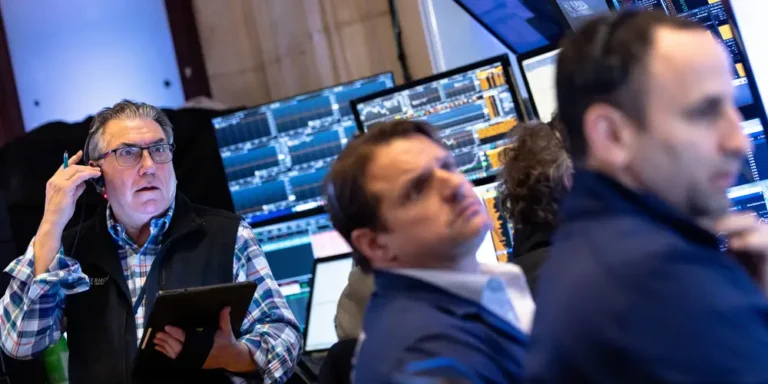How Parrot Analytics shook up Hollywood by picking streaming hits

- The Hollywood strikes thrust Parrot Analytics, which measures film and TV demand, into the spotlight.
- The 10-year-old research firm has proprietary formulas to measure demand for and value of content.
- Its CEO said Parrot is looking to expand its approach to measure IP, brands, and more.
A lesser-known actor was thrust into the spotlight as Hollywood experienced its largest work stoppage in more than 60 years, pitting some of entertainment’s brightest stars against the world’s largest media companies.
Parrot Analytics, a ten-year-old research firm, has built a complicated reputation in Hollywood in recent years with its proprietary system for measuring audience interest in films and television shows.
Wared Seger, the company’s CEO, told Insider that he predicted during the early days of streaming that there would be a fragmentation of audiences across platforms — all with walled gardens of data that would defy traditional measurement methods.
“When we first got started, the first step was to build a system that could measure global supply and demand for content,” Seger explained.
As streaming consumption soared and companies like Netflix withheld audience data, Parrot provided one of the few apples-to-apples comparisons across different series and films. With its reliance on factors as shaky as social media sentiment and as shady as piracy, its offerings were met with skepticism but gained currency.
So much currency, in fact, that Parrot became a minor player in Hollywood’s historic strikes this summer. Before going on strike in July, SAG-AFTRA proposed to the Alliance of Motion Picture and Television Producers that casts be paid 2% of the revenue generated by streaming shows — with payments based on Parrot Analytics’ Content Valuation product, which the company launched last November.
The AMPTP, which represents studios and streamers, rejected the proposal, claiming that Parrot lacks viewer data from the media companies.
SAG-AFTRA’s proposal may not have gone far, but it was a marketing coup for Parrot, which has deftly exploited the information gap in viewing data to become a growing thorn in the streamers’ side.
Seger declined to comment on the negotiations, but he did say that he’s been recognized on the streets of Los Angeles wearing a Parrot T-shirt since the strikes began. “It’s definitely become more of a mainstream conversation topic,” he explained.
Seger’s ambitions extend far beyond film entertainment; Parrot is developing additional products to measure demand for sports, intellectual property, video games, and brands. “We all live in an attention economy,” he asserted. “Our goal is to assist our clients in creating value by understanding what the consumer wants, what the demand for the TV show, video game, IP, or live sport is, and what the value attached to it is.”
As ad-supported tiers gain traction, audience data is quickly becoming a business imperative for streaming services. Even if companies start sharing more of their internal data, Seger believes it won’t provide the industry with everything it needs to measure and value content. He used the example of Parrot spotting to show how popular the Spanish show “La Casa de Papel” was before Netflix picked it up in 2017.
“Of course, if you’re a streamer, you want to get a show before someone else,” he explained. “And understanding its worth and the role it will play in assisting you to acquire, retain, and engage subscribers is critical for you to make that decision.” As a result, our approach is the only way to comprehend the value.”
When Parrot noticed an information gap in streaming, he jumped in.
After studying neuroscience and business, Seger, 35, founded Parrot Analytics in 2012 as a way to combine his interests in science, technology, and entrepreneurship. He was inspired, he said, by the cancellation of his favorite show, “Boston Legal,” by ABC four years earlier.
Parrot’s main product is its demand platform, which the company claims provides a comprehensive view of audiences’ engagement with and interest in a TV show by leveraging social conversation, streams, search traffic, and other signals. Parrot wants to make its products available to individual creators who might be priced out of Nielsen, which is geared toward large corporations, with subscriptions starting at $99 per month.
According to Seger, Parrot has 150 employees and has raised $18 million from investors. Its clients span the entertainment industry, including Disney, CAA, Amazon’s Prime Video, and Legendary.
The lack of transparency around streaming metrics — from both tech disruptors like Netflix and Amazon and legacy Hollywood companies — is a key underlying issue driving SAG-AFTRA’s strike as well as the Writers Guild of America walkout, which began in May.
A lack of clear measurement has slashed earnings in a business that has always been driven by hits, and where creators and stars have relied heavily on residual payments from successful projects, according to the writers’ and actors’ guilds.
Companies such as Antenna and Samba TV, as well as Parrot and the market leader, Nielsen, have stepped into the void with their own approaches to streaming measurement. Each has its own set of constraints. Nielsen, for example, only measures TV viewership in the United States.
In recent years, the top streamers have taken some steps toward transparency. Netflix began releasing top titles rankings in 2019, beginning with the United Kingdom, followed by Nielsen in 2020, Amazon’s Prime Video in 2022, and Warner Bros. Discovery’s Max in August. However, each streaming service has its own formula for selecting its top shows, and their figures are not third-party verified.
In 2022, Parrot took its measurement approach a step further, introducing Content Valuation, a system that promised to measure the value of any title on any platform based on a film’s or series’ impact on user retention and acquisition, thereby leveling the playing field for stakeholders across the industry.
Why do critics question Parrot’s methodology?
Parrot has also not been shy about sharing its data with news outlets (including Insider) and deploying staff such as Julia Alexander — the company’s director of strategy and a former Verge journalist — to raise its profile on sites such as Puck, where she is a contributor. It has sought news hits by releasing data on popular shows such as Netflix’s “Squid Game” and HBO’s “Succession,” and has used its Global Demand Awards to gain access to people such as HBO’s Casey Bloys, who gave Parrot interviews as part of the honor.
According to some producers and agents, Parrot has provided much-needed transparency in content measurement. After Avalon announced a collaboration with the company this spring, Jon Thoday, the agency’s co-executive chairman, stated in a statement that the valuation system was “invaluable to us in supporting talent and content negotiations.”
According to Matthew Ball, a Parrot investor and former strategy head at Amazon Studios, the company has a growing number of clients from across the Hollywood ecosystem — unions, talent agencies, entertainment law firms, studios, and streamers — which validates its products. “You also need industry-accepted frameworks and common currencies when it comes to establishing any industry-wide solutions,” Ball added. “It helps that Parrot is increasingly meeting these standards while also broadening the scope of its demand-based offerings.”
Streamers and other detractors argue that Parrot measures demand, which is fuzzier than actual viewership numbers, and that it should not be used to make business or creative decisions. Of course, whatever measurement system is used has the potential to influence what content is created, for better or worse. In the case of Parrot, critics argue that social buzz is biased toward certain types of content, such as shows with active fandoms and shows with a younger audience.
Strategy for Entertainment Guy, an anonymous analyst who describes himself as a former streaming executive, noted in a July 20 post that an anime show ranked in Parrot’s top 10 — an example of a show whose fandom exceeds its actual audience potential.
“Parrot Analytics would reward quite a few shows that weren’t the most viewed shows in America,” he wrote. “The concern for streamers (I imagine) is that they will pay top talent for shows that aren’t their top shows and aren’t driving value on their platforms.”
The streamers also dislike the fact that Parrot considers piracy, which the industry regards as pure evil as well as having questionable value as a demand signal.
Finally, streamers argue that they (and they alone) know what metrics are most important to their business, and it isn’t always demand. Retaining subscribers is more important to a streamer’s overall success than, say, how many people watched a specific show.
“Everyone of these has strengths and weaknesses in one of these areas,” said a streamer insider of the various measurement vendors. “Unless you’re inside the company, you don’t know.”
According to Seger, Parrot’s methodology considers hundreds of signals and its demand scores are directly related to top streamers’ new subscriber growth.
“The proof is in the pudding,” he declared.






